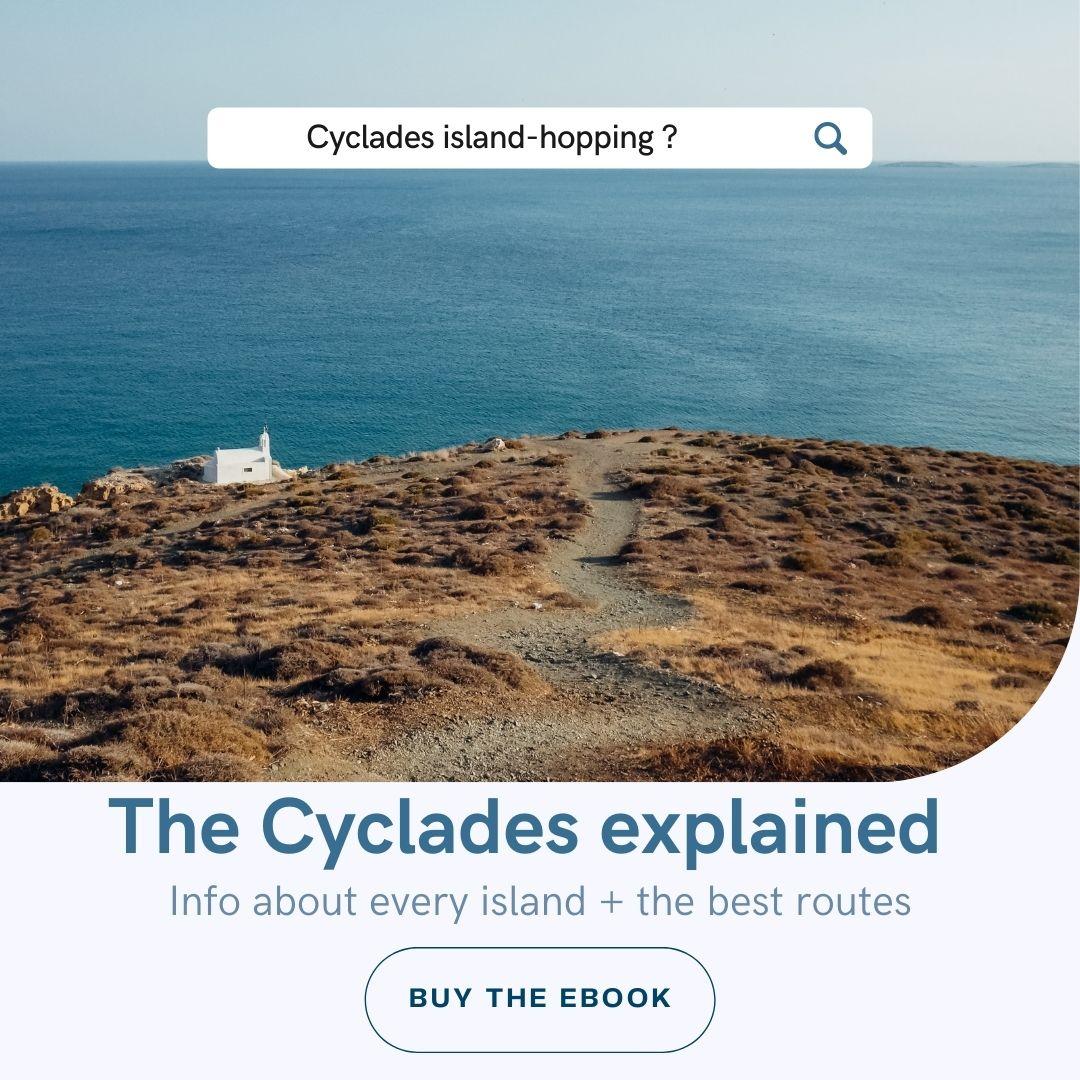Standing 575 meters above sea level and located in Peloponnese, Acrocorinth is probably the most impressive acropolis of mainland Greece. The steep rock of Acrocorinth overlooks the city of Ancient Corinth, and the fortress surrounding it is one of the oldest in Greece. Apart from being extremely well preserved, what makes Acrocorinth or Acrokorinthos even more remarkable is that you can trace elements from different civilizations. Evidence of Frankish, Byzantine, Venetian, and Ottoman presence is noticeable at all times.
Due to its proximity to Athens, a day trip to Acrocorinth is a must for people interested in Ancient Greece. The location remains relatively undiscovered, most likely because travelers prefer to visit the nearby Mycenae. However, the place is rich in history, and the landscape is stunning.
I visited Acrocorinth a couple of months ago on a beautiful autumn day. Please keep in mind that if you want to climb to the top of the rock, you’d better do it early in the morning. The sun can be very intense, and natural shadow is almost nonexistent. When I traveled to Acrocorinth, it was late October, and yet it was really challenging to climb to the top due to the sun’s intensity.
So, in this travel guide to Acrocorinth, you will see plenty of photos and lots of info for your visit to this legendary location. Of course, you’ll also read about the history of the place and tales from mythology. Straight beneath, you can also watch the 4K video I filmed in Acrocorinth with the DJI Osmo Pocket. It’ll give you a better impression of the area and an idea of the Peloponnesian landscape.
So, let’s start.
*Some of the links are affiliate links. It means that if you buy something, I might earn a small commission at no additional cost to you.
Acrocorinth guide: Mythology and history
After watching the video above, you’ll have an initial impression of the location’s landscape. However, there are more things to learn about the significance of Acrocorinth, so let’s dig deeper into its history.
Acrocorinth in Mythology
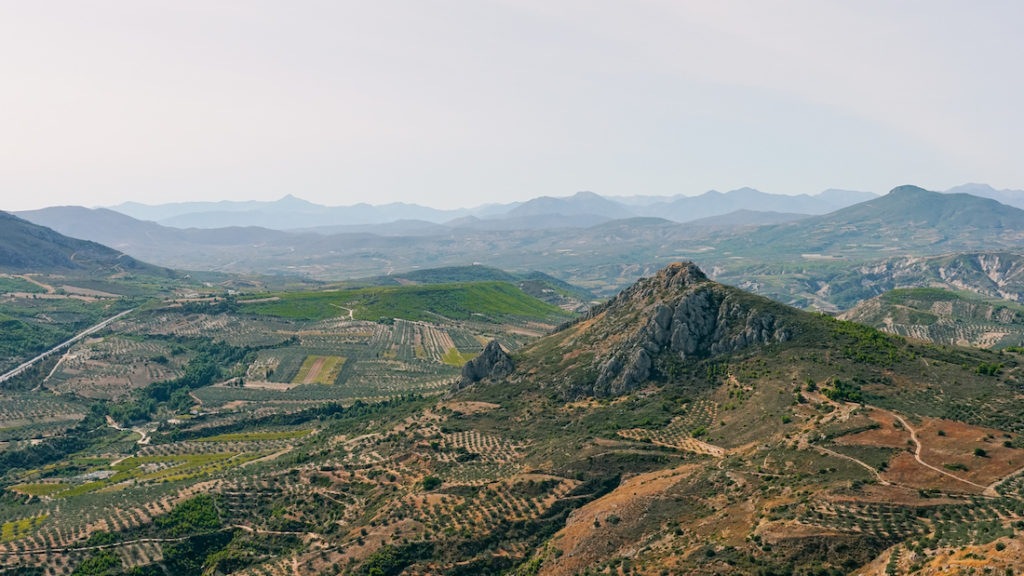
According to Greek mythology, the first owner of Acrocorinth was Bellerophon, the legendary king of Corinth. Bellerophon decided to dedicate the area to the sun god Helios. Later on, he offered the fields beneath Acrocorinth to his son, Aeëtes, but he didn’t pass him Acrocorinth itself. This was the prime spot in the area, and he decided to offer it to the goddess Aphrodite instead (or Venus, in Roman). From her side, Aphrodite was not impressed at all; she preferred staying in Mount Olympus.
It was actually Medea who built a temple on the top of the Acrocorinth dedicated to the goddess Aphrodite. The temple of Aphrodite was rather humble, but the situation changed drastically when the water finally reached the dry area. That’s thanks to Sisyphos, the king of Corinth. Sisyphos witnessed Zeus abducting the daughter of Asopus; her name was Aegina. He met Asopus and told him about the abduction, but in order to betray the place his daughter was, he asked for something in return.
Sisyphos requested a solution to the region’s water shortage. The area around Corinth had remained dry for a very long time. Asopus agreed, and that’s how Acrocorinth got its first spring. The famous Peirene Spring is still in place, and it was restored in the 20th century.
The History of Acrocorinth
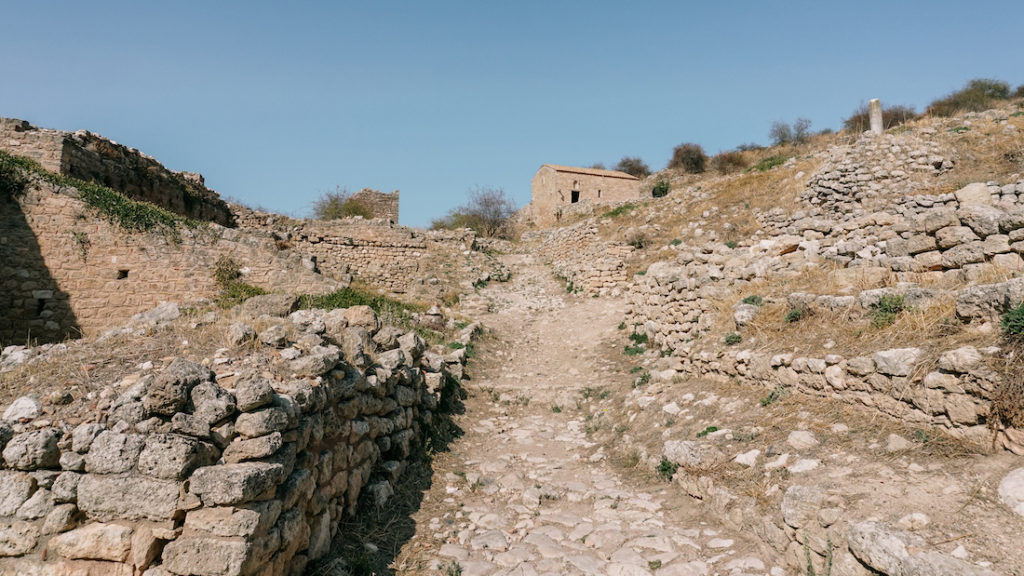
Acrocorinth (Greek: Ακροκόρινθος) was fortified for the first time back in the 7th-6th century BC. This was the work of the tyrant Periandros and his father, Kypselos. The impressive fortification created a castle-like city in Acrocorinthos, and it soon transformed into an acropolis. In ancient Greece, the acropolises were defensive points usually located on hills (acros+polis, which briefly translates to the uttermost city).
In the 4th century BC, the Macedonians refurbished and extended the masonry. The walls occupied a significantly larger area now. In 146 BC, the Roman general Lucis Mummius Achaicus destroyed Corinth and its Acropolis, officially occupying Greece. It was not before 44 BC that Julius Caesar restored the castle of Acrocorinth.
One more restoration took place in the 6th century by Justinian I, and extra additions took place until the 12th century. In 1687 the Venetians occupied the castle, and after refurbishing it once again, they gave it the form it has today. In 1715, it was the Ottomans’ turn to occupy the castle, and it remained in their possession until the Greek Revolution of 1821. The castle of Acrocorinth has belonged to Greece continuously since 1823.
What’s inside the castle
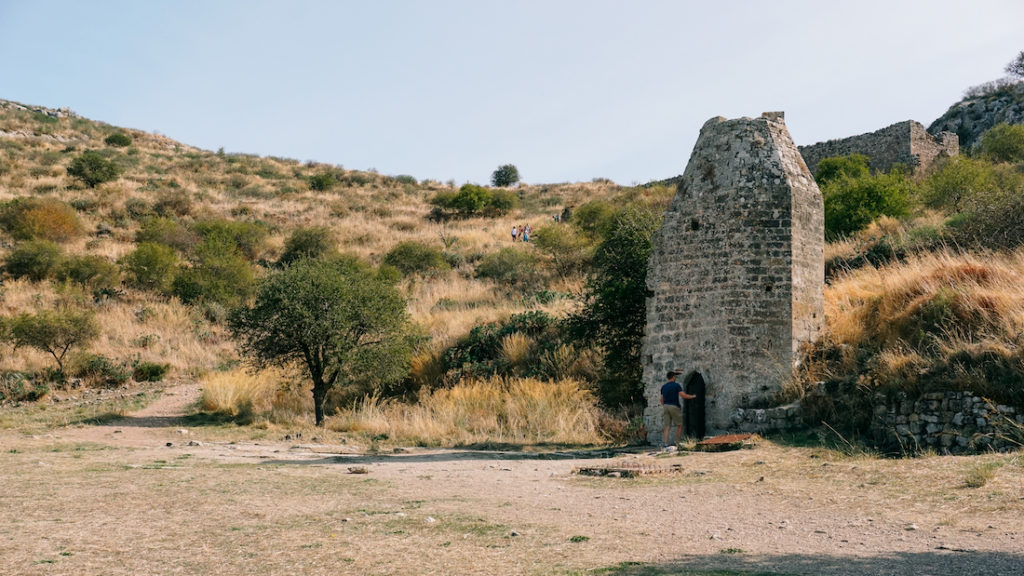
You can only enter the castle from the western side. The paved path is steep and, at some points, carved on the rock. There are three gates in the castle, and the most impressive one is the first, which has the shape of a dome. During the Middle Ages, before the first gate, there was a moveable bridge that doesn’t exist anymore.
Approximately a hundred meters to the northeast, you will see the second arched gate. From there, the steep road continues, and you will finally reach the third gate, which is the real entrance to the castle of Acrocorinth. Inside the castle, you will only see relics of older towers and buildings, as well as storage rooms or underground passages. Of course, the most famous ones are the Temple of Aphrodite, the Frankish Tower, the Mosques, and the Byzantine Cistern. Plus, one of the few things saved from the last Venetian Occupation: a cannon dating back to 1670.
By far, the most important element of the castle, though, is the so-called “Dragonera,” a water tank dating back to ancient times. According to Pausanias, that’s actually the Pirene or Peirene. Pausanias, the traveler and geographer who lived in the 2nd century AD, described Pirene using these words:
“After this is the entrance to the water of Peirene. The legend about Peirene is that she was a woman who became a spring because of her tears shed in lamentation for her son Cenchrias, who was unintentionally killed by Artemis. The spring is ornamented with white marble, and there have been made chambers like caves, out of which the water flows into an open-air well. It is pleasant to drink, and they say that the Corinthian bronze, when red-hot, is tempered by this water, since bronze the Corinthians have not.” (Source)
The view from this spot is stunning, and on a clear day, you can see parts of the Peloponnese and the Saronic Gulf.
Practical info about your day trip from Athens to Acrocorinth
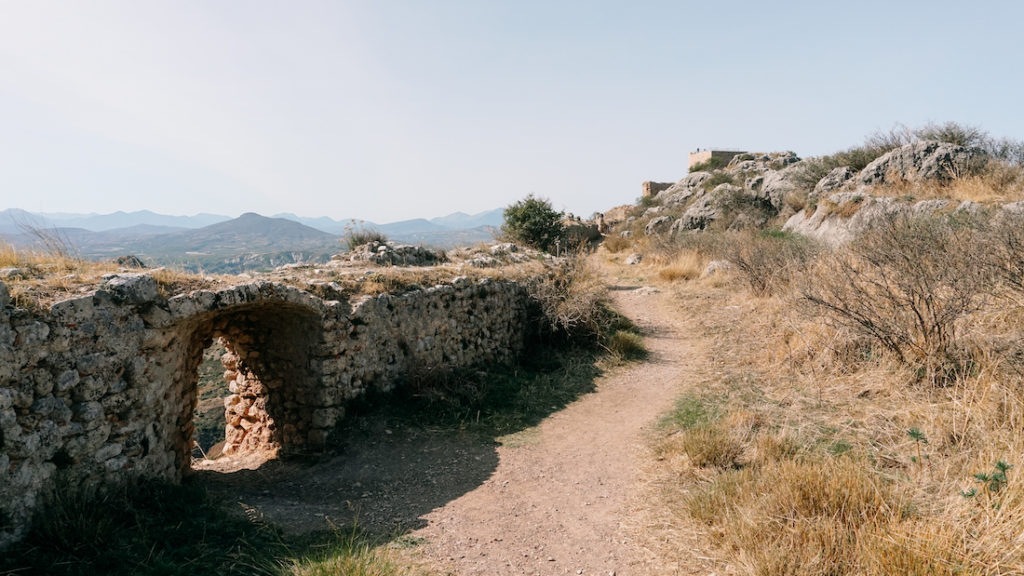
Located just 80 kilometers away from Athens, a visit to Acrocorinth is ideal for a day trip. The easiest way to reach it is by car, and it takes approximately one hour. You practically enter the highway, and you take the exit shortly before Corinth. Then, all you have to do is follow the signs pointing to the fortified citadel. Acrocorinth will be visible at all times, so it’s really hard to miss it. Therefore, if you have a driving license, rent a car in Athens and enjoy that one-hour drive.
The best option for renting a car in Greece is Car’n’Motion. I always use that service, and I’m delighted by it. You can rent a car in Athens here.
Guided tours in the region
There’s, of course, the option of organized tours. While this option is usually more pricey, it’ll offer you more peace of mind. You’ll wake up in your hotel room in Athens, and the guys offering the day tours will pick you up and drive you there. You’ll probably see a couple of more places during these tours, and you’ll also visit Ancient Corinth.
In my opinion, the best tours to Acrocorinth are the following:
Day trip to Ancient Corinth and beyond. In this tour, you’ll visit Acrocorinth together with some other places of interest like the Hera Temple and the Blue Lake. Check the tour’s availability here.
Corinth and Heraion. This tour is similar to the one above, but there’s an extra: you’ll stop at Heraion, where you’ll have the opportunity to swim at the sanctuary’s beach. Check it out here.
Visiting the castle of Acrocorinth
Acrocorinth is open daily between 8:30 and 15:30. There is currently no entrance fee, and the castle is free.
For more up-to-date information regarding opening times and admission fees, you can visit the Ministry of Culture’s official website.
An important note
Wear comfortable shoes. If you plan to wander extensively through the castle, you should wear your most comfortable pair. The stones are slippery, and the way to the top is steep at times. It’s definitely doable, but it will take some time, and you should not rush to the top.
While it’s not the most demanding physical exercise, you should take it slowly and avoid doing it between 12:00 and 16:00 if the sun is very intense.
Can I combine my visit to Acrocorinth with other archaeological spots of interest?
Yes. The Peloponnese area is rich in history, and there are actually plenty of things to do. Close to Acrocorinth, you can visit both Corinth -with the famous Isthmus and the Corinth Canal- and Corinth’s ancient city with Apollo’s legendary Temple and the beautiful archaeological museum.
If you have a car, it’s also pretty easy to reach Mycenae, the world-famous spot of antiquity. Not far away and just a short drive from both Mycenae and Corinth, you can also visit Nemea, the renowned wine region where you can also see the Temple of Zeus.
Please keep in mind that each one of the above places needs time to visit. Therefore, if you are on a day trip from Athens, make sure to start very early in the morning. Ideally, you’d better spend the night somewhere in the area and enjoy some time in the region.
In my guides to both Mycenae and Nemea (the links are above), you’ll find plenty of info about the archaeological site in each spot, plus accommodation tips, photos, and videos.
When’s the best time to visit Acrocorinth?
Greece enjoys wonderful weather all year long. The winters are mild, and the summers tend to be hot. However, when it comes to visiting archaeological sites in Greece, you’d better avoid anything between 12:00 and 16:00. The sun can be very intense, especially between May and September.
That said, it’s better to visit Acrocorinth either very early in the morning or off-season. If you happen to be in Greece during winter, check the weather forecast, and if it’s sunny (it’s very likely), go for it.
Where to stay close to Acrocorinth?
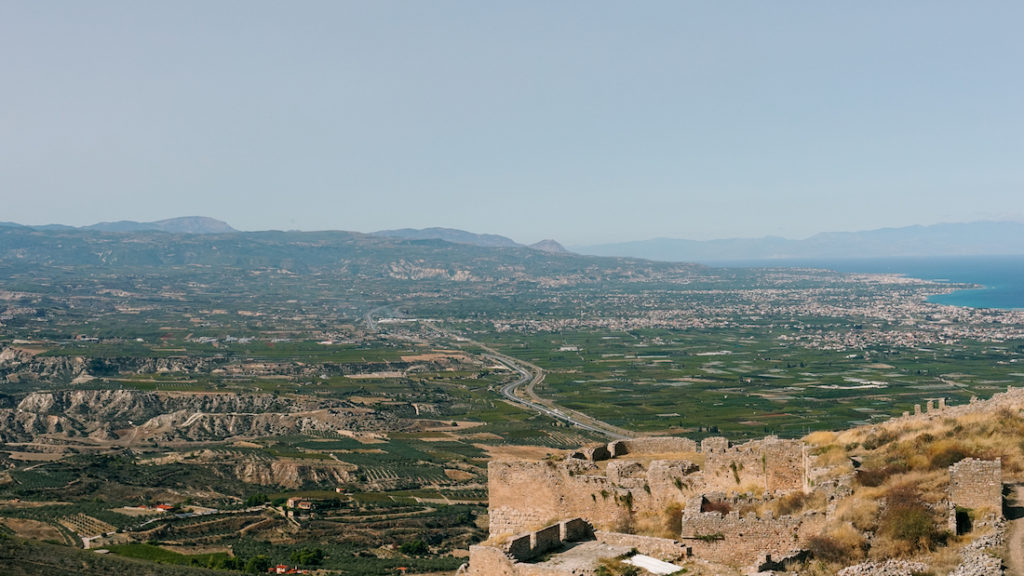
You have several accommodation options in the area, but there’s nothing straight at Acrocorinth. The fortified citadel is approximately fifteen minutes away from any settlement; therefore, your best option is to stay somewhere close to Corinth. The best accommodation options in the area are:
Maria’s Boutique rooms. A wonderful option in Ancient Corinth, not far away from every place of interest in the region. Check the availability of Maria’s Boutique Rooms here.
Lavish Villa with swimming pool. This is a great option if you are traveling with friends or can afford the cost. It is a beautiful villa close to everything, and it comes with a swimming pool. Check the prices of the Lavish Villa here.
Petra Luxury Apartments. This is one more great option for your accommodation. The apartments are in Corinth, and their prices are really competitive. See the Petra Luxury Apartments here.
Ancient Corinth Guesthouse. That’s the most affordable option for your stay close to Acrocorinth. The rooms are clean, and the prices are low. If you’re on a tight budget, that’s probably the best option for your stay. Check the Ancient Corinth Guesthouse here.
A visit to Acrocorinth: Final thoughts

Acrocorinth is one of the most impressive fortresses in Greece. However, it remains undiscovered, probably due to its proximity to other places of antiquity that lie nearby, like Mycenae. Even though I’m Greek, it’s only recently that I discovered Acrocorinth. And, honestly, I was fascinated both by the architecture and the landscape.
If you are interested in Ancient Greece, this is one of the must-see places in the Peloponnese. What makes it even more attractive is its proximity to Athens. A day trip from Athens to Acrocorinth takes just one hour, and the driving is easy. So, don’t miss the chance to visit this hidden gem the next time you are in Greece. It totally deserves it.
More about Greece: Greek islands on a budget, 1-week itineraries in Greece, Ferries in Greece Guide
Pin it for later

Did you enjoy this Acrocorinth guide? If so, please share it with your friends on Facebook, Twitter, or Pinterest.
Last Updated on April 15, 2024 by George Pavlopoulos

